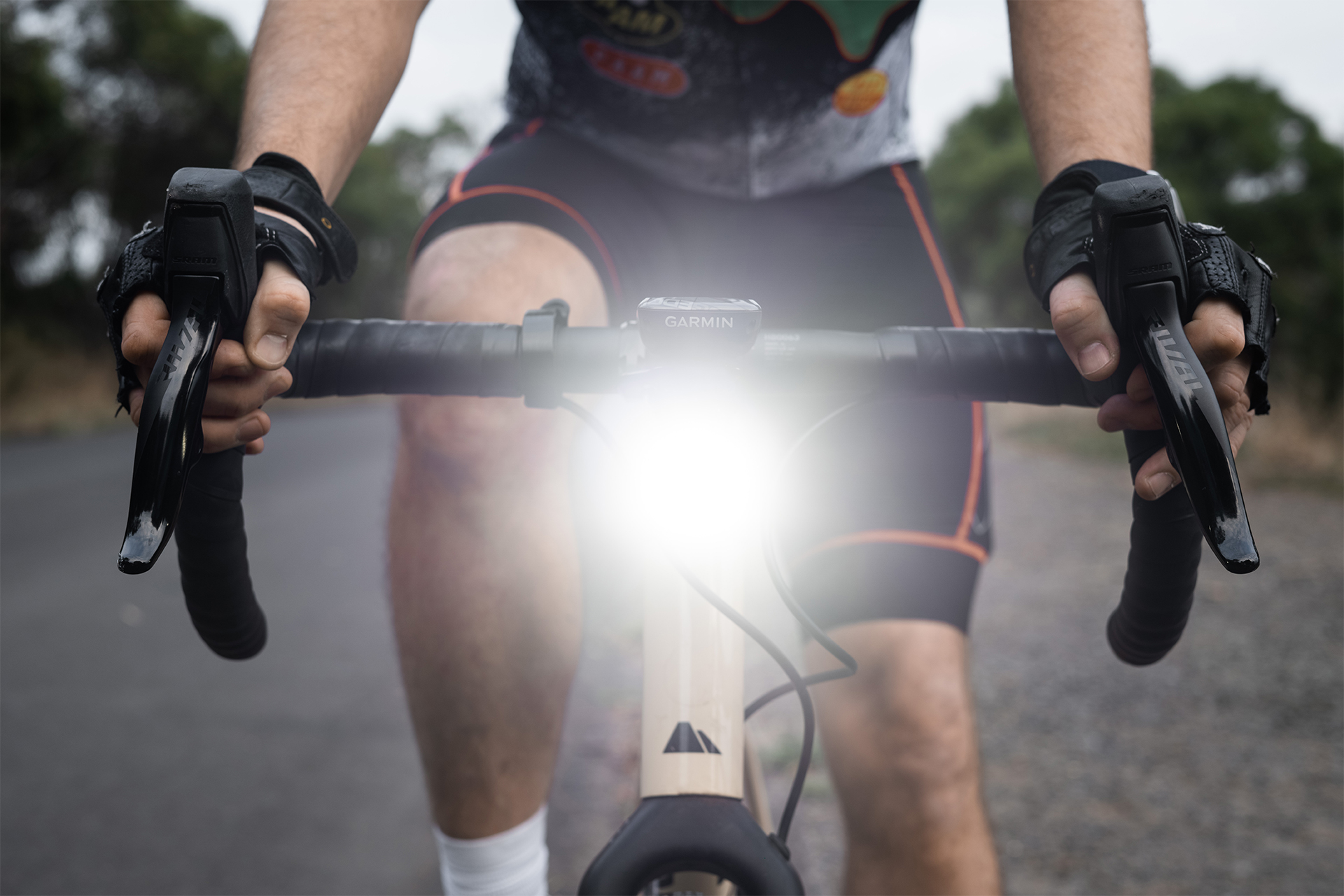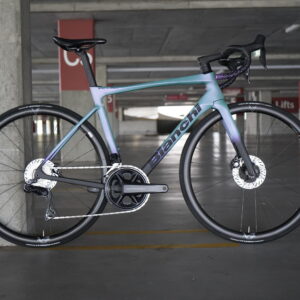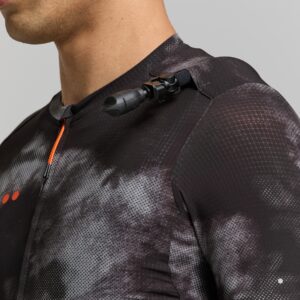LED light technology has revolutionised all types of lighting, including bike lights, which are now more compact and brighter.
All the previous Knog bike lights I’ve seen were small, colourful, and funky-looking, and they were not overly effective. That all changed when I received the new Knog Blinder 1300 for review. As the name suggests, it’s a 1,300-lumen front light that changed my brand perception.
Bike light technology has come a long way in a short time. I recall buying the latest model of front bike lights about 15 years ago, which were the ‘bee’s knees’ of lights at the time. The lights themselves were compact, included a chunky battery pack, and had just half the lumens of this new Knog.
The Knog Blinder is compact and bright, reflecting the advances in lighting technology. It effectively illuminated the dark roads I tested it on.
It comes with two mounts – a rubber strap that goes around the handlebars and a Go-Pro style mount that goes under a computer mount. I tried both mounts on different bikes and found them both easy to install and relatively easy to attach the light.
The Go-Pro-style mount was easiest to take the light on and off the bike. Unlike many other front lights with this type of mount, it does not mount upside down, meaning the controls are easy to see and access while riding.
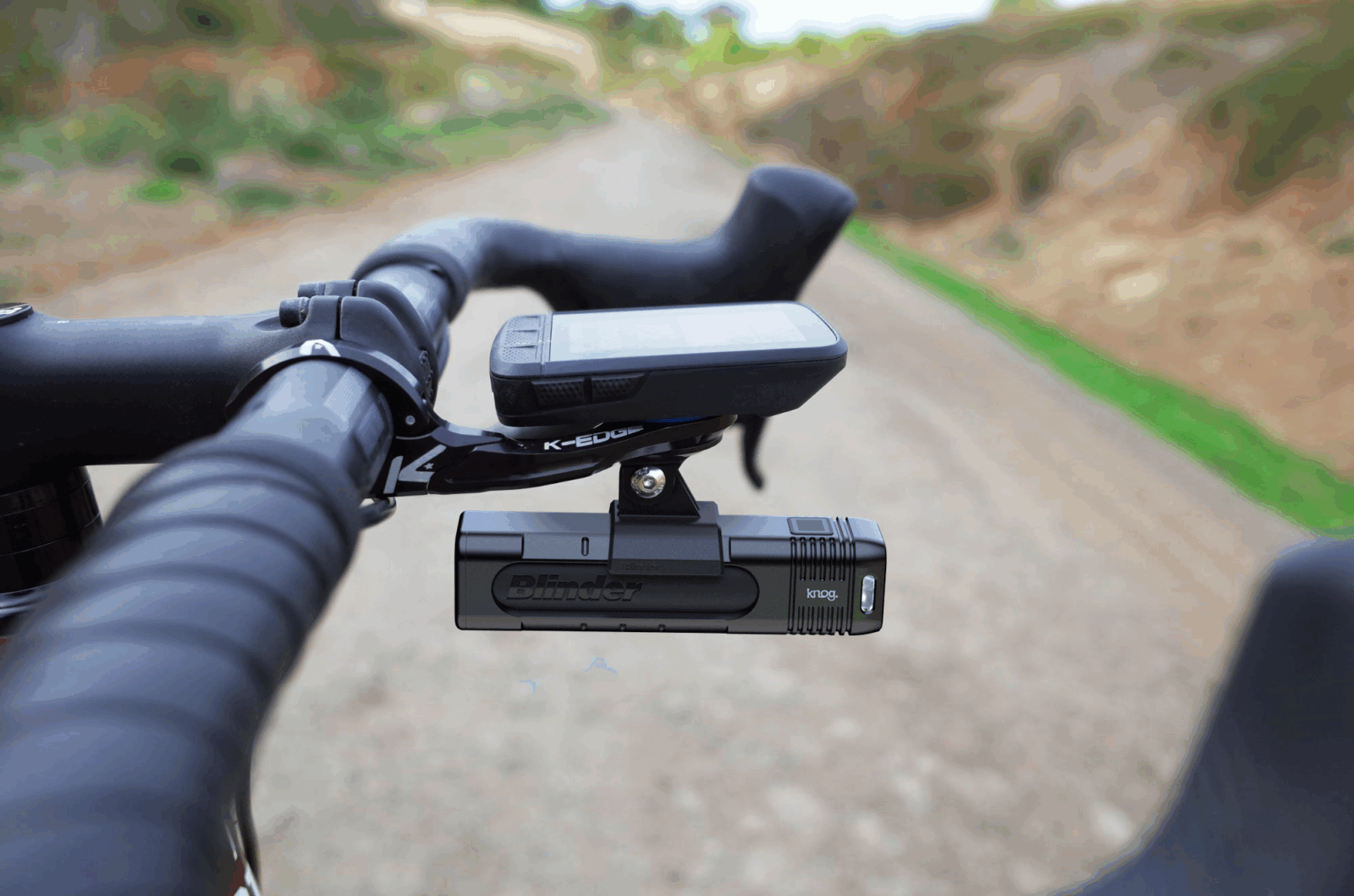
The rubber strap mount has four holes to fit different-sized handlebars. Mine are standard 31.8mm bars, and it was easy to install. Although I did find it a bit tough to remove the light from this mount, on the upside, this meant it was firmly affixed with no chance of bouncing off.
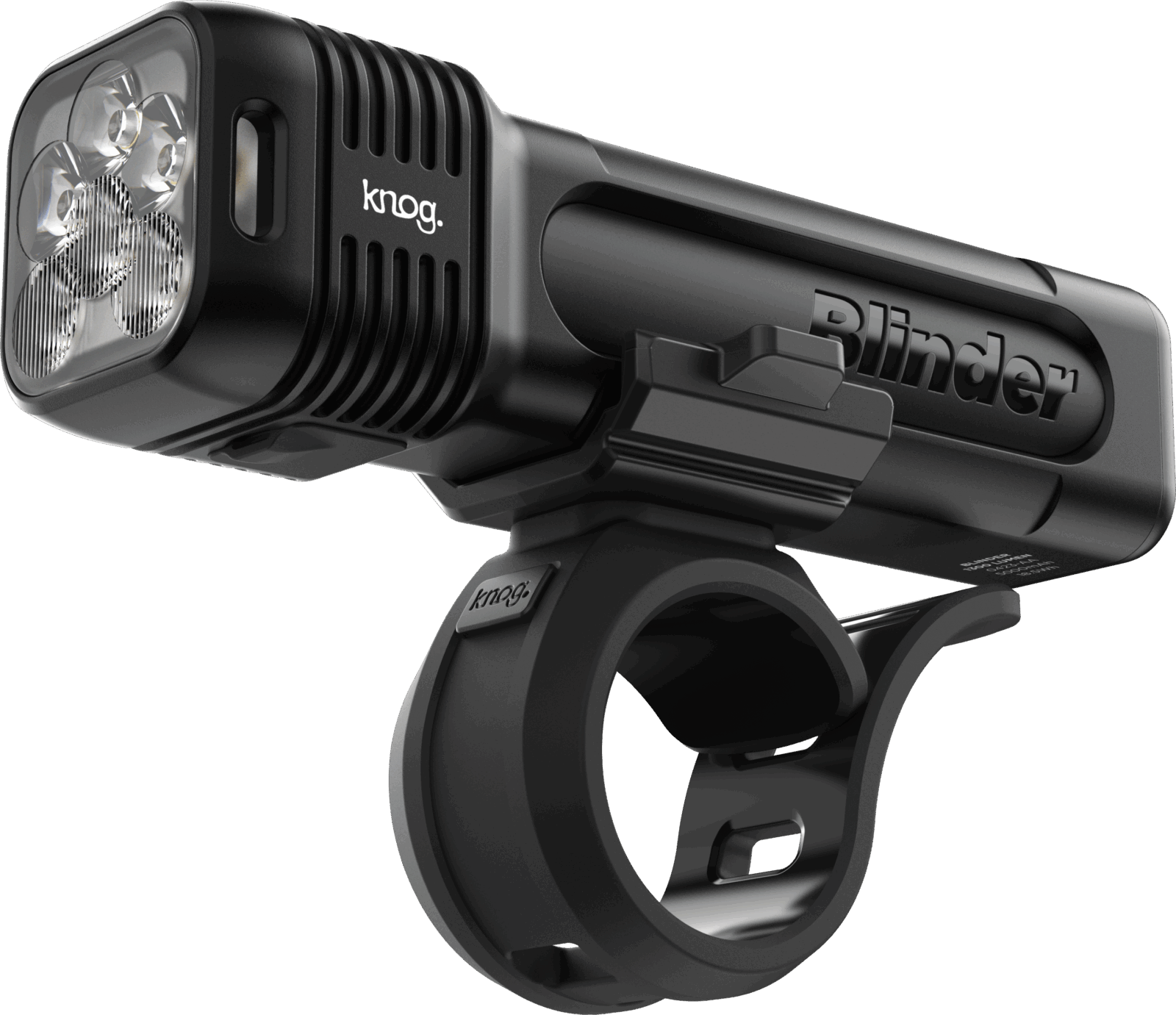
Charging is via USB-C port (the new universal standard), and the indicator light on top of the light turns green once it’s fully charged. Knog says it takes 3.5 hours to fully charge, and although I didn’t test this claim, I assume it’s correct.
My one gripe with the Blinder light is the run time on the maximum illumination, which is just 1.5 hours. Although I rarely ride in darkness for more than about an hour in the early morning, if you forget, like I do, to change to a flashing mode, you’ll find yourself without a front light illuminated after just 1.5 hours. When riding in daylight, I prefer to use my front light on a flashing mode, and this wasn’t possible once I reached that 1.5-hour limit.
My recommendation is not to use the highest illumination, but step down one or two levels to conserve battery power. Although it is nice and bright when using any of the solid modes, so you won’t be missing out on typical suburban roads like the ones I frequent.
On the other end of the scale, it boasts an impressive 120 hours of run time in Eco mode. There are six light modes, and it’s easy to scroll between them.
On the upside is the compact, lightweight metal body, which weighs 180 grams. It’s also waterproof, although I thankfully didn’t test this feature.
The retail price of the Knog Blinder 1300 is $169.
More info bikecorp.com.au
Nicola Rutzou – a long-time contributor and, most recently, the editor of Bicycling Australia. Nicola is a keen Sydney-based road cyclist who writes reviews, news, and destination pieces, as well as the weekly e-newsletter for BA online.
